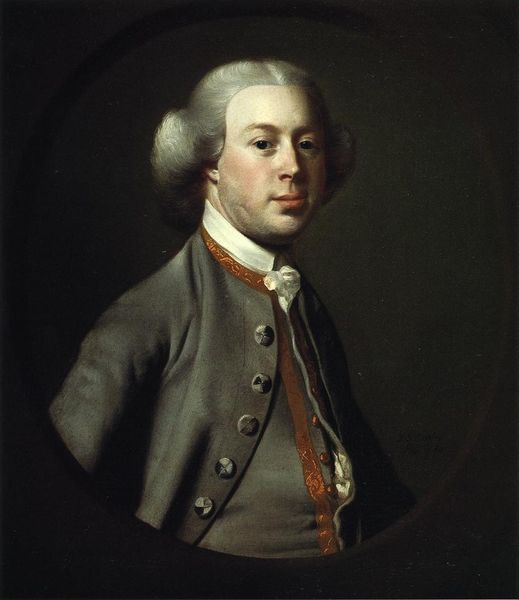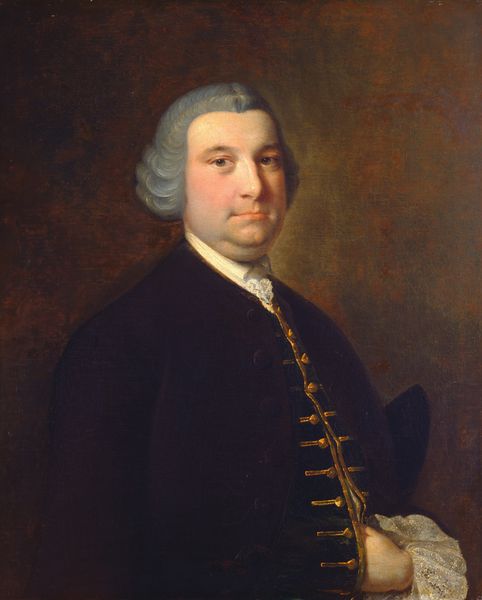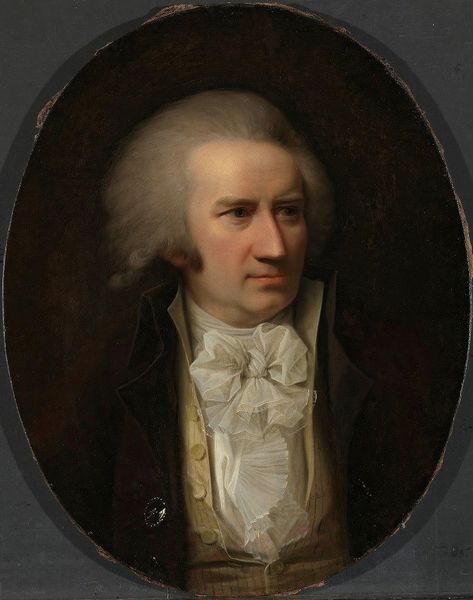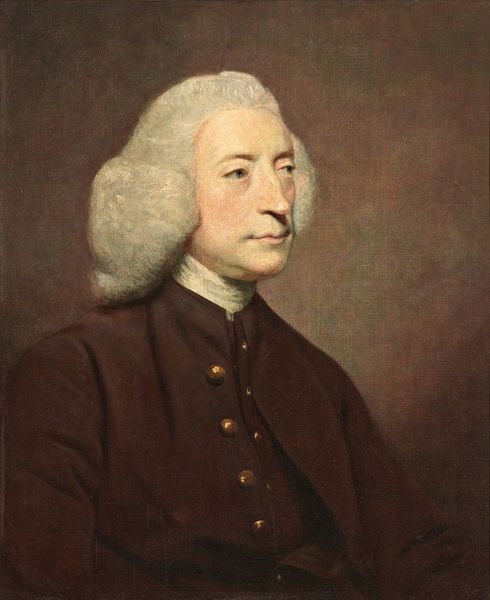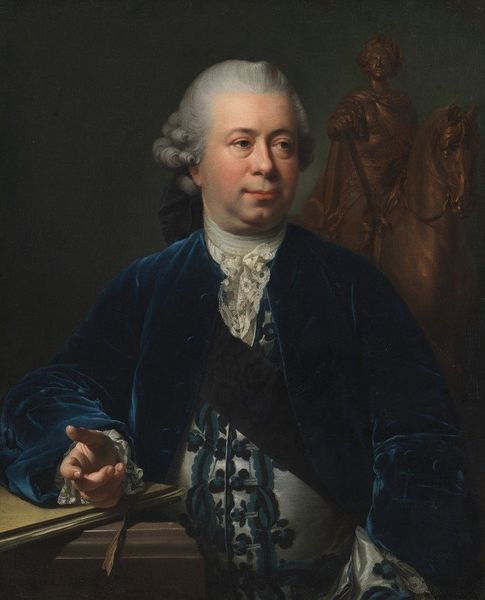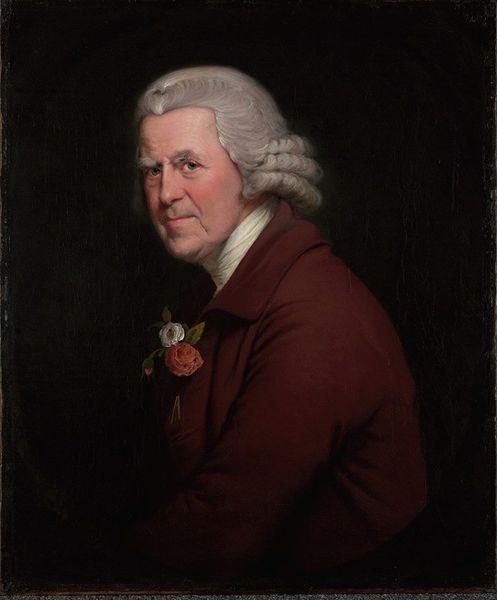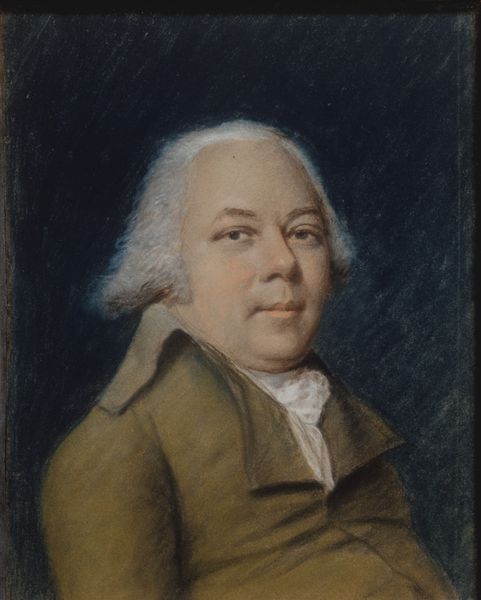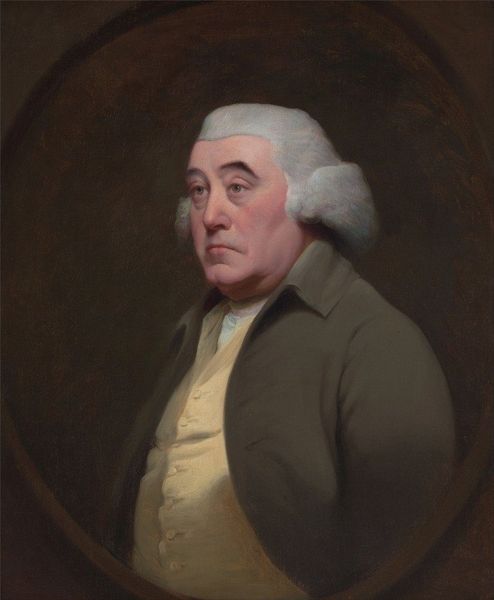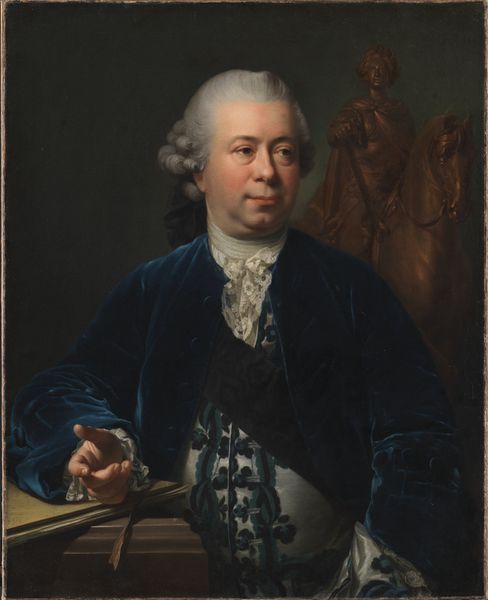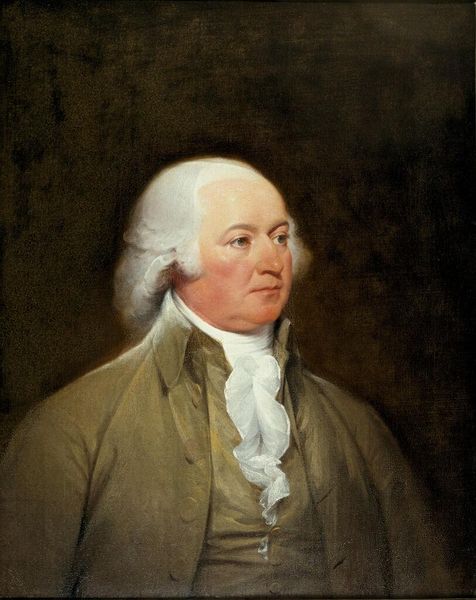
painting, oil-paint
#
portrait
#
figurative
#
neoclacissism
#
portrait
#
painting
#
oil-paint
#
academic-art
Copyright: Public Domain: Artvee
Editor: This is Joseph Wright of Derby's "Portrait of Mr. William Chase, Sr." from around 1760-1765. I find the image immediately striking because of how formal it is, from the powdered wig to the neatly buttoned coat. What details jump out at you? Curator: Beyond the sitter's affluence implied by his garments, consider the symbolic weight of portraiture itself during this period. It signifies status, of course, but also continuity, lineage, and memory. Editor: Could you expand on the idea of memory and lineage? Curator: The portrait serves as a carefully constructed representation, not just of an individual, but of a family's history and aspirations. Mr. Chase's gaze, though seemingly direct, invites the viewer into a curated narrative. The symbolism would resonate with generations, creating a sense of connection through time. Consider also the formal Neoclassical elements: the oval frame and the restrained palette contribute to this timeless effect. Do you see the psychological implications there? Editor: Absolutely. The controlled composition and somewhat reserved expression suggest a carefully constructed persona. It makes me wonder what's behind the surface. Curator: Precisely. The artist provides clues, offering a window into the subject’s social standing and personal identity through visual cues like clothing and pose. These codified representations were fundamental to how societies understood themselves and preserved their collective memories. Editor: I never considered a portrait holding so much cultural information, all within the pose and clothing! It’s fascinating to think about how images can be so carefully constructed to communicate these ideas across generations. Curator: Indeed. And the beauty is, these symbols continue to evolve, adding layers to their meaning with each viewing.
Comments
No comments
Be the first to comment and join the conversation on the ultimate creative platform.
